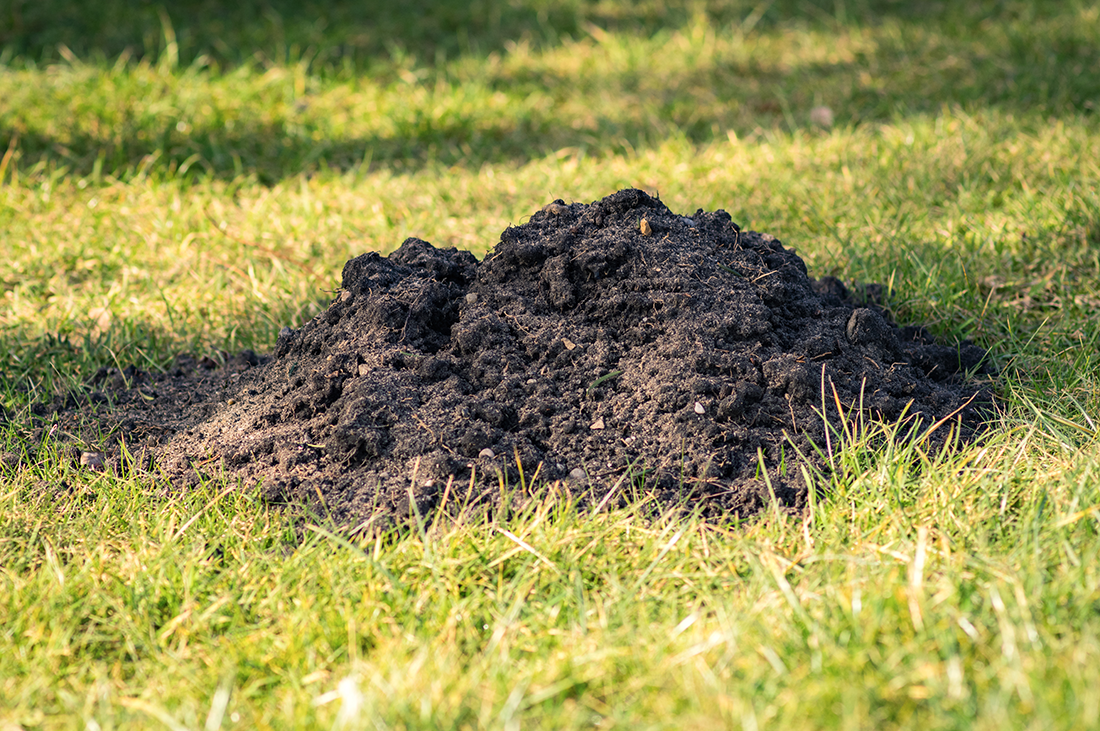Do You Have Moles in Your Yard?
Have you noticed strange ridges or mounds in your lawn and wondered if moles are to blame? Knowing how to identify mole activity can save you time, money, and frustration. We will walk you through the signs, behaviors, and next steps so you can take action quickly.

Key Signs That Point to Mole Activity
The most common indicator is raised tunnels across your lawn. These are surface runways created as moles search for food. Fresh tunnels often appear overnight. You might also find cone-shaped mounds of loose soil. These are entry and exit points called molehills.
Another clear sign is uneven ground when you walk across your yard. If it feels spongy or collapses underfoot, underground tunnels may be the cause.
Unlike other pests, moles rarely eat plants. Their diet consists mostly of insects, earthworms, and grubs. If you notice fewer earthworms in your garden or unusual insect activity, this can also point to mole presence.
Understanding Mole Behavior
Moles are solitary and highly territorial. A single mole can cover an area of up to two acres, which means even one can cause noticeable damage. They work in shifts, alternating between active digging and resting periods every four hours.
They are most active in moist soil, especially after rainfall. This makes spring and fall peak seasons for activity. Moles spend nearly all their time underground, making them difficult to spot directly.
Understanding these patterns can help you decide when and where to focus your efforts.
Practical Ways to Confirm Mole Activity
Before starting mole control, confirm that moles are indeed the cause of the damage.
One reliable test is the “tunnel collapse test.” Flatten a section of raised tunnel, then check 24 hours later. If the tunnel is rebuilt, moles are likely to be active in that area.
You can also check the soil in molehills. Fresh mounds have loose, moist soil, while older ones are compact and dry.
If you are still unsure, consider contacting a local mole control expert. A professional can confirm the presence, locate the active tunnels, and recommend an effective solution.
Commonly Asked Questions
How do I know if I have moles or gophers?
Moles create raised surface tunnels and cone-shaped molehills, while gophers leave flat mounds and chew plant roots.
Can I have more than one mole in my yard?
It is possible, but most yards have only one or two moles due to their territorial nature.
Are moles harmful to my plants?
They usually do not eat plants, but their tunneling can disturb roots.
When is mole activity highest?
Spring and fall are peak seasons, especially after rainfall.
Can I handle mole control myself?
Some DIY methods exist, but professional trapping is the most reliable way to stop ongoing damage.
Final Thoughts
Identifying mole activity early can save your yard from extensive damage. If you suspect mole activity, we can help confirm the signs and recommend an effective plan to protect your property.
Contact us today by phone, email, or our online form to schedule your consultation.
If you’re ready to take your yard back from underground invaders, we’re ready to help.



